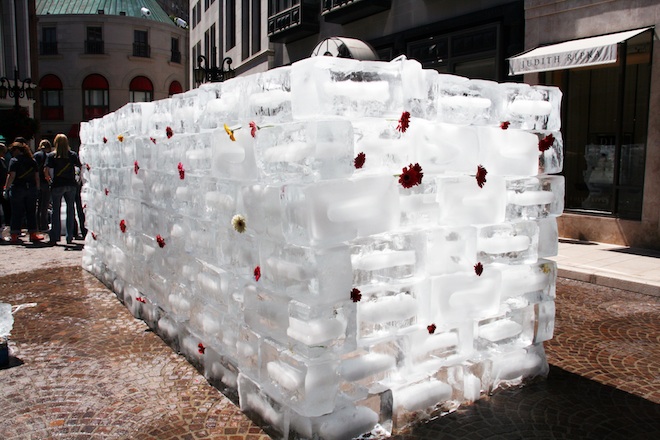
“I say reinventions, rather than reconstructions, because the works … differ
markedly from their originals. Intentionally so. As I wrote in notes to one of
them, they were planned to change each time they were remade. This decision,
made in the late 50s, was the polar opposite of the traditional belief that the
physical art object—the painting, photo, music composition, etc.—should be fixed
in a permanent form.
Furthermore, the Environment quickly incorporated the idea of internal changes
during its presentation. The conventional spectators became the participants
who executed the changes. Here, also, the traditional notion of the uniquely
talented artist (the genius) was suspended in favor of a tentative collectivity (the
social group as artist). Art was like the weather.”
— Allan Kaprow, 1991 (7 Environments, pg. 23)
“Yard was originally made in the sculpture garden of the Martha Jackson Gallery
in New York. It consisted of hundreds of used tires covering the ground in no
particular order. Five tarpaper mounds emerged from the tires …. (The tarpaper
actually covered Mrs. Jackson’s sculpture collection, which couldn’t be moved!).
Visitors were encouraged to walk on the tires, and to throw them around as they
pleased.
Since 1961, the work … has been remade seven or eight times in Europe and
America; and on each occasion it was changed, more or less greatly, to fit the
particular spaces and contexts.”
— Allan Kaprow, 1991 (7 Environments, pg. 113)





“While there was an initial version of Fluids, there isn't an original or permanent
work. Rather, there is an idea to do something and a physical trace of that idea.
By inventing a version of Fluids … [one] is not copying my concept but is
participating in a practice of reinvention central to my work.
Fluids continues, and its reinventions further multiply its meanings. [Its history
and artifacts are catalysts], an invitation to do something.”
— Allan Kaprow, October 2004

